Notes: Ffrith Station opened on the 2nd May 1898. It was situated on the Wrexham and Minera Joint Railway’s (W&MJR) line that connected Mold with Brymbo. The W&MJR was a joint railway its partners being the London & North Western Railway (LNWR) and the Great Western Railway (GWR).
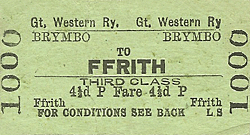 |
The line had its origins in the Ffrith Branch which ran from Padeswood to Collieries in the Coed Talon area. The Ffrith Branch had opened on the 14th September 1849. In 1865 an Act was obtained to extend the Ffrith Branch southwards through Llanfynydd. In 1866 the extension became part of the W&MJR. It opened to freight on the 27th January 1872. |
The gradients on the original line between Padeswood and Coed Talon were extremely steep. To overcome the difficulties of the steep gradients the LNWR obtained an act in 1866 to build a four and a half mile new line from Tryddyn Junction, which lay a quarter of a mile to the east of Mold, to Coed Talon. This line was completed to Coed Talon in 1870 creating a junction.
On the 1st January 1892 the LNWR introduced a passenger service from Mold to Coed Talon. On the 2nd May 1898 the service was extended to run south to Brymbo. A station was opened at Ffrith to serve the local village through which the line passed.
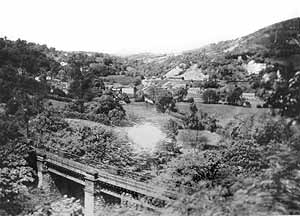 Ffrith Viaduct
Ffrith Viaduct |
Ffrith station was provided with one platform as the Mold to Brymbo line was a single track railway. The station was situated on the east side of the line high above its village namesake on an embankment. It was accessed by means of a footpath. The facilities at Ffrith were very basic the building and the platform being constructed out of timber. The building was a simple single storey structure that housed a booking office and a waiting room. A house was provided on the west side of the line, at the south end of the station for the Station |
Master. Ffrith didn't handle goods traffic but was provided with a single siding opposite the platform. Just to the south of the station the line crossed the Nant Ffrith valley by means of an imposing stone viaduct.
At the time of opening Ffrith Station was served by four trains per day in each direction which ran between Mold and Brymbo. The train service was operated by the LNWR. The service could easily have been extended to run into Wrexham as there was a GWR line from Brymbo to Wrexham. The GWR however did not wish to provide the LNWR with a route into Wrexham. Passengers wanting to travel from Coed Talon to Wrexham had to change at Brymbo.
By 1904 there were still four trains in each direction between Mold and Brymbo with an extra service running on Wednesday and on Saturday evenings but by 1919 these had been increased to five trains per day in each direction.
In 1923 Ffrith became a joint line of the GWR and the London Midland Scottish Railway (LMS) after the later had absorbed the LNWR. The LMS operated the passenger service which by 1934 consisted of five trains per day in each direction on weekdays and six on Saturdays. From 1931 however Ffrith passengers could no longer travel to Wrexham via Brymbo as the GWR withdrew its passenger service that ran between Wrexham, Brymbo and Berwig.
During the Second World War the service was reduced and only two trains per day in each direction called at Ffrith.
| After the war the service remained at two trains that ran in the morning and late afternoon only. The trains were laid on primarily to serve local children who attended Mold Grammar School. From January 1st 1948 Ffrith became part of the Nationalised British Railways (London Midland Region). On the 27th March 1950 British Railway's withdrew the remaining passenger |
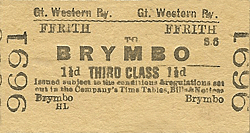 |
trains from the Mold and Brymbo line and Ffrith closed as a passenger station.
The line remained open for goods traffic until 1952 when the line between Coed Talon and Brymbo was closed completely and quickly lifted. The station at Ffrith was demolished but foundations and wooden supports can still be seen at what is now a very wooded site. The station masters house and the viaduct are still extant.
Tickets from Michael Stewart, route map drawn by Alan Young
Source – From Chester to Holyhead – The Branch Lines by Bill Rear. Oxford Publishing 2003 ISBN 978-0-860935-69-8
To see other stations on the Brymbo - Mold line click on the station name:
Brymbo, Llanfynydd, Coed Talon & Mold |

old1.jpg)


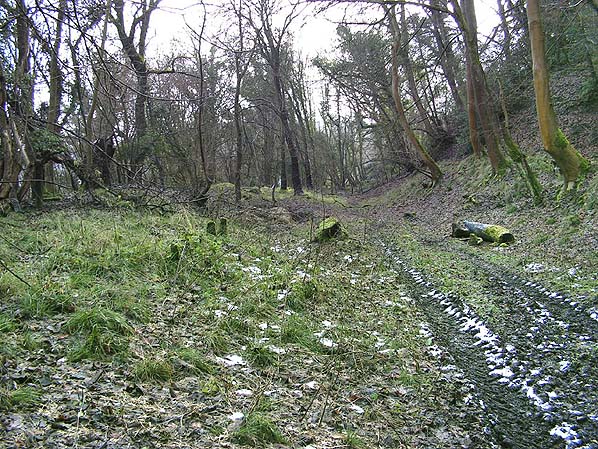
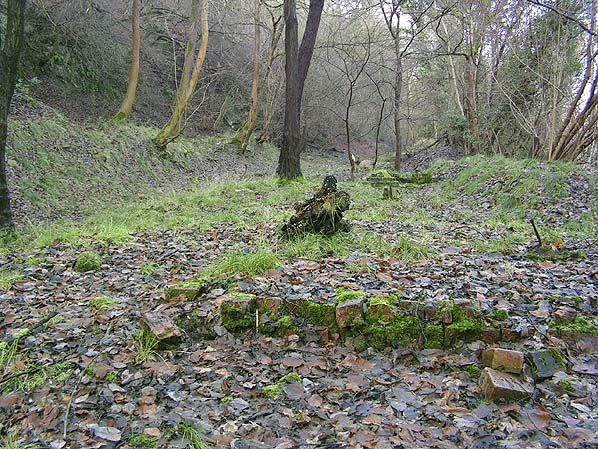











 Home Page
Home Page